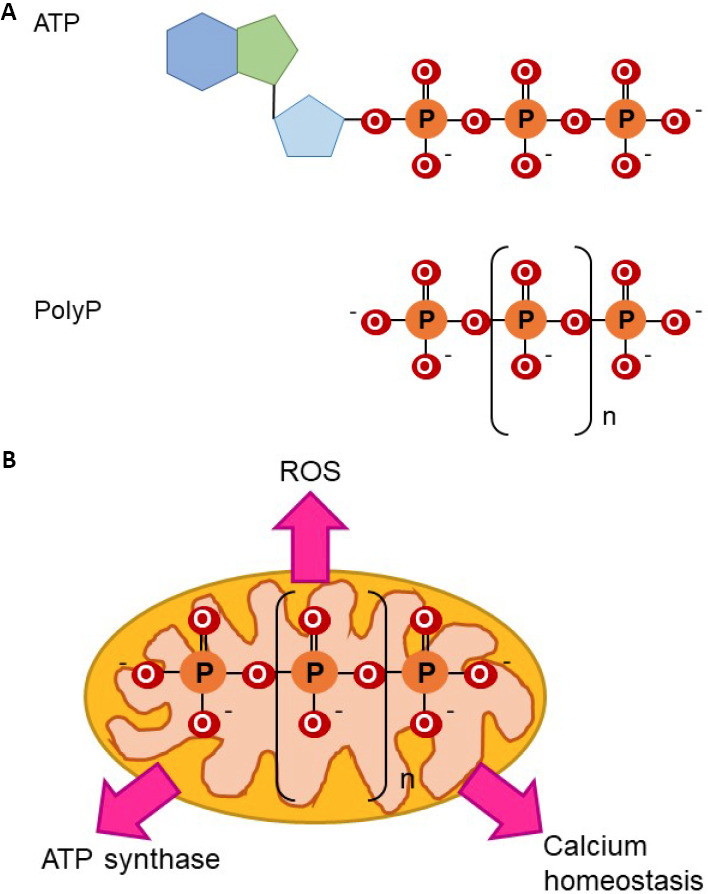Figure 1.

Molecular structure of polyP and role in bioenergetics.
(A) ATP and polyP have phosphoanhydride bonds. Note the presence of phosphoanhydride, isoenergetic bonds in both molecules. (B) Effects of polyP on mitochondrial bioenergetics are broad. Due to its phosphoanhydride bonds, which are isoenergetic to those found in ATP, and its mitochondrial location, the role of polyP as a component of mammalian bioenergetics has been proposed. There is evidence for this, such as data that prove the effects of mitochondrial polyP in the regulation of ROS production and in mitochondrial calcium homeostasis. Both processes are closely related to energy production. Moreover, recently it has been proposed that polyP can be produced and metabolized in mammalian, mitochondrial ATP synthase. ATP: Adenosine triphosphate; polyP: inorganic polyphosphate; ROS: reactive oxygen species.
